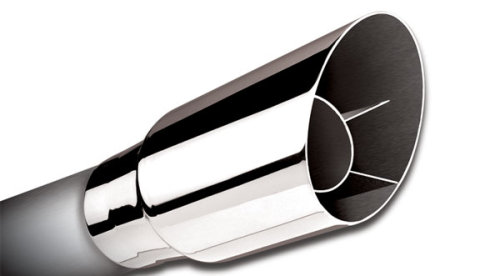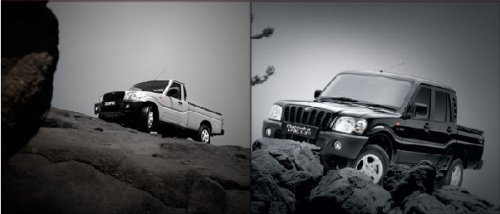
 Author Archive for Jason Lancaster
Author Archive for Jason Lancaster
Jason Lancaster is the editor and founder of TundraHeadquarters.com. He has nearly a decade of experience on the retail side of the auto industry, and another decade of experience of the part and accessory side of the industry.
Toyota Consolidates Tundra Manufacturing, HD Tundra Tabled?
In a very wise move, Toyota has announced that they’re going to consolidate all Tundra production to the San Antonio plant. Currently, Tundras are produced in both San Antonio, Texas and Princeton, Indiana. Originally, before the launch of the 2nd-generation Tundra, Toyota decided to produce the Tundra at a couple of different plants for a few reasons:
- Facilities and convenience. The Princeton plant was the home of the original first-gen Tundra, and a lot of suppliers for the 2nd-gen truck were nearby and accustomed to working with the Princeton, Indiana plant.
- Quality at launch. Toyota wisely determined that launching an all-new truck at an all-new plant might be a quality control issue, so they decided to use the tried-and-true Princeton plant to produce the new truck along with the new San Antonio plant. This reduced the number of variables when it came to quality control and helped Toyota isolate production problems correctly.
- Capacity. This is the main reason – Toyota anticipated they would need all the production capacity they could get for the new Tundra half-ton and upcoming Tundra HD. At full speed, the Princeton plant could build 150k new trucks per year. The San Antonio plant has the capacity to build 250,000 units per year. Obviously, Toyota anticipated producing as many as 400k units between the two plants. Considering the future plans that were being discussed at the time – a diesel HD version of the Tundra as early as 2009, for example – it was determined this capacity was needed.
What this means to you: If you’re waiting for an HD Tundra, you might be waiting a while. The costs of producing a diesel HD Tundra are substantial. Not only are there quite a few R&D costs (such as designing a new big diesel, platform design, etc.), but now there are production concerns too. Since the San Antonio plant has a maximum annual production capacity of 250k units, there’s not a lot of extra capacity to build an HD version of the Tundra.
Here’s why:
Search terms people used to find this page:
- tundraheadquarters
The Top Chrome Parts for the Toyota Tundra
The Toyota Tundra is a beefy-looking full-size truck. Toyota went out of their way to make sure that it had enough “attitude” to contend with the muscled look of the Dodge Ram and the sleek lines of the sharp-angled F150. The bulging front end with the over-sized grille really helped to define the Tundra as a true competitor in the marketplace.
Yet despite the Tundra’s good looks, there are many people out there who see their trucks as a palette which they can customize to their heart’s content. This is usually done in order to make the appearance of their vehicle as much of a reflection of their personality as possible. These people are drawn to the styling of the Tundra but are looking to dress it up with a few extra touches. One of the best ways to do this is with chrome accessories. Let’s take a look at some of the most popular chrome options.

Borla’s stainless steel exhaust tip has the chrome look, and it’s a great accent to a stock exhaust that doesn’t cost a lot of money.
4th of July Auto News From Around The Web
Happy 4th of July America! It’s been 232 years since we told the King of England to shove it, yet I still feel obliged to fight with every Briton I see. Now on to the news…

Mahindra’s new pickup trucks for the U.S. market feature 4-cylinder diesel engines with 300 lb-ft of torque and 30 mpg. The will arrive in the U.S. this time next year.
What the *hell* is a Mahindra? – You’re going to hear a lot of people say this in the next year, and since you’re reading this you’ll know the answer. Mahindra is an Indian company that builds quite a few trucks and SUVs in India. They’re going to export a smallish pickup truck with a 4 cylinder diesel engine to the US, starting in late 2009. Cost isn’t known yet, but the consensus is the trucks will start around $20k. Fuel economy is supposed to be good too – 20-30 MPG. The engine is rumored to have 150hp and 300lb-ft of torque, and Mahindra claims they will be offering a diesel-electric hybrid option in 2010. While quality concerns and name recognition will keep this brand from selling big volumes right away, the combination of great gas mileage and low cost might be enough to entice a lot of consumers.
Search terms people used to find this page:
- tundraheadquarters
A Toyota Dealership Parts Department That Understands The Internet
Here’s an interesting statistic: There are nearly 1300 Toyota dealers in the United States, each with their own parts department. Toyota and TRD supply every one of these dealership parts departments the same parts and accessories for the same price. Yet, out of nearly 1300 Toyota dealers, only a small handful bother to sell parts online.
You may be wondering why so few Toyota dealers sell parts online, but the answer is really pretty simple. It’s not easy. Online customers expect quick service, lots of information, and a great price. While many Toyota dealers offer solid customer service and excellent information, pricing keeps most dealership parts departments from being competitive online. Except, of course, for the Sparks Toyota parts department.

The parts guys at Sparks Toyota. From left to right: Barrett, Jamie, and Mark. Ken (the camera-shy Internet parts manager) is not shown.
Toyota Tundra Sales Tanking, HD Tundra In Trouble?
While it’s not entirely unexpected, sales of the Toyota Tundra plummeted nearly 53% in June 2008 compared to June 2007. Adjusted for selling days (only 24 in June 08′ compared to 27 in June 07′), that still works out to a 47% sales decline month-to-month. Year over year, however, Tundra sales have only dropped about 8%. This is due to the fact Toyota sold relatively few Tundras in the first quarter of 2007 – the new Tundra did not debut until late February of that year. Toyota then finished 2007 strong with Tundra sales totaling 196,555 trucks.
We have revised our 2008 Tundra sales projection, and now anticipate Toyota will sell approximately 150,000 Tundras in 2008. Considering the condition of the new vehicle marketplace and the prospect of competing against the new 2009 Ford F150 and 2009 Dodge Ram, it’s entirely possible our projection of 150k Tundras will be reduced further.
It’s important to remember that Toyota is not alone – every truck manufacturer is facing double-digit year over year sales declines in their truck lines. As of right now, Toyota Tundra year over year sales have declined less than any other half-ton truck (excepting the Honda Ridgeline, but that’s not really a truck). In other words, don’t let any Ford, Chevy, or Dodge owners tell you Toyota’s in trouble. If anything, the Dodge Ram is the most likely candidate to disappear. Rumors that Chrysler has exhausted their operating cash have some analysts convinced they’re likely to file bankruptcy.
What this means to you: If you’re in the market for a new truck, this is nothing but great news. Incentives are only going to increase from this point forward. If you’re looking to get rid of your truck, however, this news isn’t too good. As new vehicle incentives increase, used vehicle values drop. We’re also concerned that this weakness in Tundra sales will delay the development of the HD Tundra. Some analysts project that an HD Tundra with a 7.4L diesel will debut as soon as 2012, but we believe this projection is a bit optimistic. In fact, we wouldn’t be surprised if Toyota completely paused development of the HD version of the Tundra pending changes in the marketplace.
The 4.4L diesel Tundra (light duty), however, is still on track and should be available late next year as a 2010 model.
Tundra Sales Figures:
June 2007: 21,727 – June 2008: 10,238
Total sales thru June 2007: 82,840 – Total sales thru June 2008: 76,516

